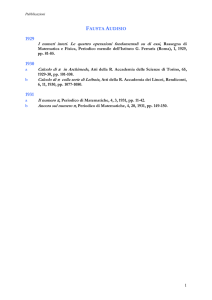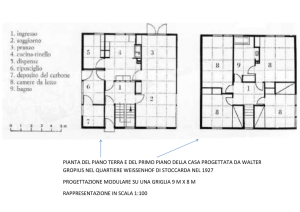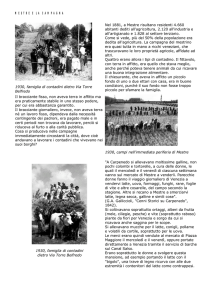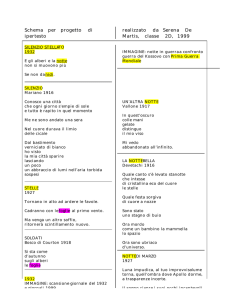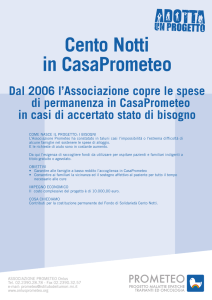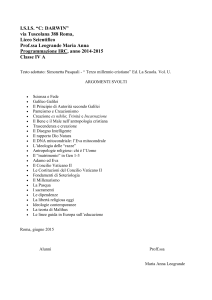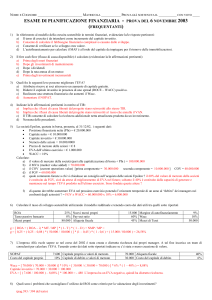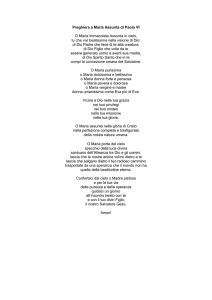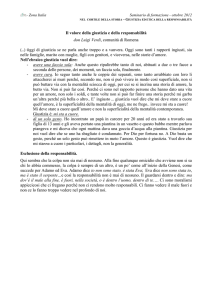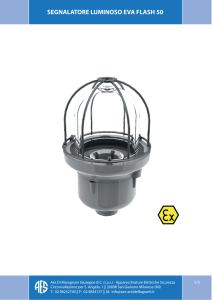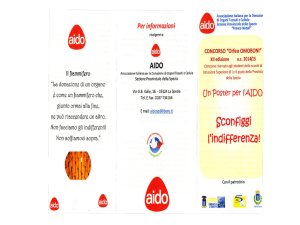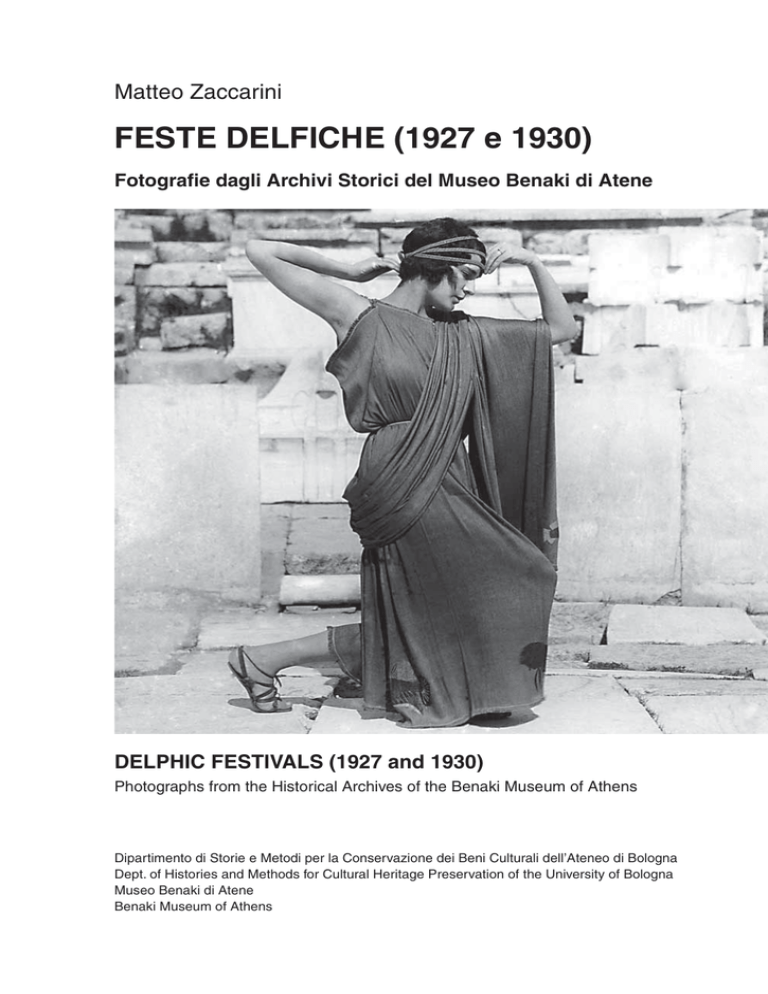
Matteo Zaccarini
FESTE DELFICHE (1927 e 1930)
Fotografie dagli Archivi Storici del Museo Benaki di Atene
DELPHIC FESTIVALS (1927 and 1930)
Photographs from the Historical Archives of the Benaki Museum of Athens
Dipartimento di Storie e Metodi per la Conservazione dei Beni Culturali dell’Ateneo di Bologna
Dept. of Histories and Methods for Cultural Heritage Preservation of the University of Bologna
Museo Benaki di Atene
Benaki Museum of Athens
Diari del Mediterraneo
Mediterranean Diaries
2
collana diretta da Andrea Nanetti e Luigi Tomassini
series edited by Andrea Nanetti and Luigi Tomassini
Matteo Zaccarini
Feste Delfiche (1927 e 1930)
Fotografie dagli Archivi Storici del Museo Benaki di Atene
Delphic Festivals (1927 and 1930)
Photographs from the Historical Archives of the Benaki Museum of Athens
Prefazione di Andrea Nanetti
Introduzione di Luigi Tomassini
Preface by Andrea Nanetti
Introduction by Luigi Tomassini
Dipartimento di Storie e Metodi per la Conservazione dei Beni Culturali dell’Ateneo di Bologna
Dept. of Histories and Methods for Cultural Heritage Preservation of the University of Bologna
Museo Benaki di Atene
Benaki Museum of Athens
Meduproject and Editrice La Mandragora
Imola 2009
Questo volume è stato stampato grazie al contributo finanziario della Fondazione Flaminia e della
Fondazione Cassa di Risparmio di Ravenna per la mostra “Fotografie di antichità classiche dagli archivi del Museo Benaki di Atene (1880-1930)” (Ravenna, Palazzo dei Congressi, 18-30 maggio 2009),
di cui il volume offre un catalogo selettivo dedicato alle sole Feste Delfiche (1927 e 1930). La mostra,
patrocinata da Comune e Provincia di Ravenna e da RavennAntica - Fondazione Parco Archeologico
di Classe, nasce dalla collaborazione tra il Museo Benaki (direttore prof. A. Delivorrias) e il Dipartimento di Storie e Metodi per la Conservazione dei Beni Culturali dell’Università di Bologna (direttore
prof. A. Pompilio), e presenta frutti del lavoro di catalogazione e digitalizzazione di fotografie svolto da
M. Zaccarini negli Archivi Storici del Museo Benaki (Atene, 2.IV-3.IX.2007, tutor dott.ssa V. Telikas)
nell’ambito di un progetto “Leonardo da Vinci” della Comunità Europea, coordinato e cofinanziato
dalla Provincia di Ravenna, dal Consorzio Provinciale per la Formazione Professionale di Ravenna
(dott.ssa S. Rivola), dal Polo Scientifico-Didattico di Ravenna dell’Alma Mater Studiorum Università
di Bologna (prof.ssa E. Marchetti) e dal SIDI-Eurosportello della Camera di Commercio di Ravenna
nell’ambito del progetto “Sviluppo di una rete europea a sostegno della conservazione e tutela del
patrimonio culturale e ambientale”. Il coinvolgimento del Museo Benaki e il tema del tirocinio “Inventariazione e digitalizzazione di materiale fotografico negli Archivi Storici del Museo Benaki di Atene”
furono proposti e sostenuti dal prof. A. Nanetti, che ha seguito M. Zaccarini durante tutto il tirocinio fino
alla realizzazione della mostra.
This book has been printed thanks to support from the Fondazione Flaminia and the Fondazione
Cassa di Risparmio di Ravenna with funds allocated for the exhibition on “Photographs of Classical Monuments in the Historical Archives of the Benaki Museum of Athens, 1880-1930” (Ravenna,
Palazzo dei Congressi, May 18-30, 2009). This book offers a selective catalogue focusing on the
Delphic Festivals (1927 and 1930). Sponsored by the Comune and Provincia di Ravenna and by
RavennAntica - Foundation for the Archaeological Park of Classe, the exhibition is the result of close
collaboration between the Benaki Museum (Director Prof. A. Delivorrias) and the Dept. of Histories
and Methods for Cultural Heritage Preservation of the University of Bologna and presents the results of cataloguing and photographic digitizing work performed by Dr. Matteo Zaccarini as part of
the “Leonardo da Vinci” project (April 2 - Sept. 3, 2007) at the Historical Archives of the Museum,
under the tutorship of Dr. V. Tselikas, curator of the Archives. The “Leonardo da Vinci” internship
was organised with the support of the European Community, coordinated and co-funded by Ravenna Province, Ravenna Provincial Consortium for Professional Education (Dr. Silvia Rivola), the
Ravenna Branch of the University of Bologna (Prof. E. Marchetti) and SIDI-Eurodesk of the Ravenna Chamber of Commerce as part of the “Development of a European network in support and
preservation of cultural and environmental heritage” project. The collaboration with the Benaki Museum and the subject matter of “Inventory-taking and digitizing of photographic material preserved
in the Historical Archives of the Benaki Museum of Athens” were proposed by Prof. A. Nanetti, who
supervised M. Zaccarini for the duration of the internship until the staging of the exhibition.
Graphics from the “Mediterranean Diaries” series by Caterina Minganti
Cover: Athens, Benaki Museum, ǹȡȤİȓȠ ǼȪĮȢ Palmer-ȈȚțİȜȚĮȞȠȪ, 189/395,
digitalized by M. Zaccarini and digitally restored by E. Para and M. Zaccarini
All photographs are © Copyright 2006 by Benaki Museum Athens
Co-edited by Meduproject and Editrice La Mandragora
ISBN 978-88-7586-228-2
© Copyright 2009 Volume and Series - Meduproject® s.r.l. - www.meduproject.com
Editrice La Mandragora - via Selice, 92 - 40026 Imola (Bo)
Tel. 0542 642747 - Fax 0542 647314 - www.editricelamandragora.it
First Edition May 2009
Printed in Italy
SOMMARIO | INDEX
Prefazione di Andrea Nanetti
p. 8
Preface by Andrea Nanetti
p. 9
Introduzione di Luigi Tomassini
p 10
Introduction by Luigi Tomassini
p. 11
Le Feste Delfiche di Eva Palmer e Angelos Sikelianos (1927 e 1930)
di Matteo Zaccarini
p. 14
The Delphic Festivals of Eva Palmer and Angelos Sikelianos (1927 and 1930)
by Matteo Zaccarini
p. 15
DIARIO DI VIAGGIO | TRAVEL DIARY
Album
Sezione 1. Prometeo Incatenato (1927 e 1930)
Section 1. Prometheus Bound (1927 and 1930)
p. 22
Sezione 2. Supplici (1930)
Section 2. The Suppliants (1930)
p. 30
Sezione 3. Agoni atletici (1927 e 1930)
Section 3. Athletic contests (1927 and 1930)
p. 32
Prefazione
di Andrea Nanetti
Gli Archivi Storici del Museo Benaki di Atene conservano centododici fotografie
delle Feste Delfiche organizzate da Angelos Sikelianos e da Eva Palmer negli anni
1927 e 1930. Le fotografie, depositate insieme a quattro diversi archivi famigliari, costituiscono un caso esemplare di come l’inventariazione e la digitalizzazione di testimonianze fotografiche relative alle memorie della Grecia classica possano divenire
un luogo critico privilegiato per un’indagine tanto delle testimonianze archeologiche
quanto della tradizione dell’antico tra Otto e Novecento.
Questo “Diario di Viaggio” del dott. Matteo Zaccarini viene pubblicato in concomitanza con una mostra fotografica (Ravenna e Atene 2009), con cui vuole iniziare un
momento di dialogo interdisciplinare tra archivisti, storici della fotografia, contemporaneisti e studiosi di storia, archeologia, drammaturgia e letteratura greca.
Il lavoro si propone come un progetto pilota finalizzato alla realizzazione di un’infrastruttura internazionale di censimento, indicizzazione e archiviazione delle immagini
analogiche di beni archeologici greci conservate in archivi storici.
Atene, 6 maggio 2009
Preface
by Andrea Nanetti
The Historical Archives of the Benaki Museum of Athens preserve 112 photographs of the Delphic Festivals staged by Angelos Sikelianos and Eva Palmer in
1927 and 1930. These photographs, donated to the Museum with four separate family archives, represent an exemplary model of how the digitizing and inventory-taking
of photographic evidence concerning the history of Classical Greece can become a
privileged critical locus for research into both archaeological heritage and the traditions of antiquity in the nineteenth and twentieth centuries.
This “Travel Diary” by Matteo Zaccarini is published in concomitance with a photographic exhibition (Ravenna and Athens 2009); its aim is to stimulate debate among
archivists, historians of photography, contemporary historians and scholars of Greek
history, archaeology, dramaturgy, and literature.
The work aims to become a pilot project for the surveying, indexing and recording
of analogical images concerning Greek archaeological heritage stored in historical
archives.
Athens, May 6, 2009
Introduzione
Le Feste Delfiche e la reinvenzione della tradizione classica
di Luigi Tomassini
Le fotografie delle Feste Delfiche conservate presso il Museo Benaki di Atene
e qui pubblicate costituiscono un caso molto interessante di “reinvenzione” di una
tradizione durante il periodo fra le due guerre.
Questa re-invenzione della tradizione (secondo la fortunata formula adottata a suo
tempo da Eric Hobsbawm per intitolare una delle sue opere più riuscite) ha da una
parte una evidente specificità nazionale, ellenica, ma d’altra parte rivela fin dall’inizio
una valenza chiaramente più ampia, indirizzata ad un pubblico internazionale.
Il recupero della tradizione e della cultura greca non solo in quanto parte di una
tradizione classica letteraria, artistica e filosofica, ma in quanto parte di una eredità
culturale impregnata di valori spendibili sul piano politico dalle classi dirigenti liberali
dell’epoca, aveva avuto, come rivela la diffusione e il ruolo potente del mito della
libertà dei Greci già all’inizio del XIX secolo, un ruolo importante nella opinione pubblica europea; così come del resto il recupero della civiltà medievale dei liberi comuni
italiani operata da una schiera molto nutrita di intellettuali europei e diffusa anche a
livello popolare (ad esempio attraverso le guide di viaggio) da personaggi di grande
spessore come John Ruskin, aveva favorito il recupero dell’arte dei cosiddetti “primitivi” e aveva stimolato la ripresa in chiave rinnovata di antiche feste o giostre. Il caso
del Palio di Siena era stato esemplare in Italia in questo senso: alla dimensione di
giostra tradizionale inserita in un evento religioso e simbolico (le celebrazioni della
Madonna, patrona della città) e in una tipica dialettica di rivalità interne e locali (le
contrade), il Palio aveva aggiunto un forte recupero della memoria storica locale, di
coreografie e di ritualità mirate anche a interessare un pubblico esterno ed a rafforzare l’identità di Siena come città medievale, proprio negli stessi anni un cui si promuoveva un grande rilancio di scala nazionale e internazionale dell’arte medievale
senese. In questo modo il Palio aveva assunto quella duplice valenza, interna ed
esterna alla città, che ha conservato fino ai giorni nostri.
Le Feste Delfiche di Angelos Sikelianos e di Eva Palmer rivelano fin dall’inizio
questa duplice valenza, non foss’altro per le vicende biografiche dei due promotori;
qui non è possibile approfondire ulteriormente questo aspetto, peraltro affrontato
egregiamente in questa e altre sedi da Matteo Zaccarini; ma vorrei sottolineare che
per il periodo in cui si colloca il tentativo dei coniugi Sikelianos e del loro mecenate
Benakis, sono possibili tutta una serie di paralleli e di confronti con l’Italia che costituiscono un interessante terreno di approfondimento per la comprensione di questo
materiale fotografico documentario così singolare e affascinante.
Fra le due guerre infatti il recupero della memoria e della tradizione locale, medioevale o classica, si amplia enormemente, con una forte attenzione non più solo
al terreno storico artistico, ma anche al terreno folklorico e delle tradizioni popolari,
Introduction
The Delphic Festivals and the reinvention of classical tradition
by Luigi Tomassini
The photographs of the Delphic Festivals, preserved at the Benaki Museum of
Athens and published herein, represent an extremely interesting case of “reinvention” of a tradition in the period between the two World Wars.
This form of “reinventing” tradition (according to the fortunate formula adopted
some time ago by Eric Hobsbawm to title one of his most successful works) has, on
one hand, an evident national, Hellenic, specificity, yet on the other reveals from the
very beginning a clearly broader value, addressed to an international audience.
The recovery of Greek tradition and culture not just as part of a classical literary,
artistic and philosophic tradition, but as part of a cultural legacy imbued with values
which could be used at political level by the ruling liberal classes of their time, played,
as did the spreading and powerful role of the myth of Greek freedom at the beginning
of the XIX century, an important part in European public opinion. To a similar extent
there had been a recovery of the medieval civilization of the free Italian communes,
carried out by an extensive group of European intellectuals; that recovery was also
made widespread at popular level (i.e. through travel guides) by high-calibre authors
such as John Ruskin and was aided by the recovery of so-called “primitive” art,
stimulating the revival of ancient festivals and jousts under a renewed perspective.
The Palio of Siena had been exemplary in Italy in this sense: to the dimension of
a traditional joust integrated into a religious, symbolic event (the celebration of the
Madonna, patron of the city) steeped in a sense of local, internal rivalry (between
the “Contradas”), the Palio had also added an effective recovery of local historic
tradition, choreography and rituality that also aimed to touch an external audience
and strengthen Siena’s own identity as a medieval city, all at a time when Siena’s
medieval art was undergoing extensive revaluation on a national and international
scale. In this way, the Palio had taken on a dual value – internal and external to the
city – which it preserves to this day.
The Delphic Festivals of Angelos Sikelianos and Eva Palmer reveal this dual
value from the very beginning, as is clear from the biographical vicissitudes of their
two organizers alone; this aspect is excellently dealt with by Matteo Zaccarini here
and in other works. Nevertheless I would like to underline that, given the time in
which the Sikelianos’ and their patron Benakis’ attempt is set, it is possible to make
a series of comparisons and confrontations with Italy, which form an interesting field
of investigation for the comprehension of this photographic documentation, so rare
and fascinating.
Between the two Wars, as a matter of fact, the recovery of culture and local tradition, medieval or classical, was enormously amplified, with a strong attention not
just to the historical-artistic field, but also that of folkloristic and popular traditions,
12
Introduzione
al teatro, alla musica. Nel caso italiano, la ripresa o la vera e propria invenzione di
feste, giochi, cerimonie, assume un significato e una forte valenza politica. Tali iniziative finiscono per rivestire quindi un significato “moderno” non meno importante dei
loro contenuti “tradizionali” e si accoppiano, come hanno mostrato gli studi di Marco
Palla, di Stefano Cavazza e altri, a una promozione sul piano dell’immagine (quindi
anche con l’uso di mezzi di comunicazione moderni, come la fotografia o i filmati
LUCE) e ad un uso a fini di promozione turistica.
Del resto è ben noto il ruolo importante che avevano avuto già prima della grande guerra in Italia i film di ambientazione classica (da Guazzoni a Pastrone) anche
quelli che recuperavano i testi canonici della tradizione letteraria nazionale italiana
(ad esempio, l’«Inferno» di Adolfo Padovan, recentemente recuperato e restaurato
da Michele Canosa e Giovanni Lasi e ripresentato presso l’Università di Bologna da
Alfredo Cottignoli e Sebastiana Nobili).
Non mancano del resto anche forti propensioni a orientare queste iniziative verso
una ripresa di attività teatrali, anche classiche, e anche rivolte a larghi strati di popolazione, con aspetti originali, come nel caso delle attività dopolavoristiche studiate da
Victoria De Grazia; oppure verso una ripresa accentuata della dimensione sportiva e
agonistica, che mimava (si pensi al caso del calcio in costume fiorentino) e cercava
di riprendere il successo di pratiche sportive di massa già molto popolari all’epoca.
Per quanto il giudizio della storiografia più qualificata in materia sia piuttosto limitativo, dato che si considera sostanzialmente non giunto a compimento nel corso
degli anni ’30 il tentativo di realizzare una egemonia culturale regionalistica e tradizionalistica in Italia su queste basi, tuttavia questo tipo di attività risulta di estremo
interesse sul piano storiografico. Infatti permette di verificare come nella costruzione
delle identità locali e nazionali si intrecciassero sia i richiami alla tradizione, sia le
spinte modernizzatrici, sia la dimensione locale, sia quella internazionale.
Sotto questo aspetto i fondi fotografici qui esposti, anch’essi testimonianza di un
tentativo sostanzialmente non giunto a realizzare compiutamente i suoi ambiziosi
obiettivi, mettono tuttavia in luce uno degli esperimenti più suggestivi e interessanti
realizzati in questo campo a livello internazionale, sia per il loro valore intrinseco, sia
per una possibile analisi sul piano comparativo con altri casi, e segnatamente con
quello italiano.
Introduction
13
theatre and music. In the Italian case, the revival or invention of festivals, games
and ceremonies is meaningful and of significant political value. These enterprises
therefore end up holding a “modern” meaning, no less important than their “traditional” contents and merge, as shown by the studies of Marco Palla, Stefano Cavazza
and others, to create new imagery (that is, also with modern means of communication, such as photography or LUCE films) and find employment as a means of
touristic promotion.
After all, the important role already played in Italy by movies with a classical
setting (from Guazzoni to Pastrone) was well known before the Great War, as was
that of those derived from the canonical texts of Italian national literary tradition (i.e.
“Inferno” by Adolfo Padovan, recently restored by Michele Canosa and Giovanni Lasi
and shown at the University of Bologna by Alfredo Cottignoli and Sebastiana Nobili).
There is also a strong tendency to direct these enterprises toward a revival of
theatrical works, including the classical, addressing them to broad parts of the population, with original aspects such as the case of the ‘after-work club’ activities studied
by Victoria De Grazia or, alternatively, toward a revival of a sporting, competitive dimension, which aimed to mimic and recreate the success of mass sporting customs
already very popular in their time (just think of Florentine traditional dress soccer).
While judgement by the most qualified historiography in the field is rather limitative, since the attempt to produce a regionally-based traditionalistic cultural hegemony
in Italy during the 1930s is basically considered incomplete, such activities nevertheless turn out to be extremely interesting from a historiographical point of view. It
allows us, indeed, to see how calls to tradition, the drive for modernization and localinternational aspects all interact to create local and national identities.
From this point of view the photographic collections displayed here, although
witness to a basically unsuccessful attempt to achieve ambitious idealistic goals,
illustrate one of the most striking and interesting experiments realized in this field on
an international basis, both on account of their inherent value and a potential comparative analysis with other instances, mainly the Italian one.
Le Feste Delfiche di Eva Palmer e Angelos Sikelianos
(1927 e 1930)1
di Matteo Zaccarini
Il 9 e il 10 maggio 1927, sotto un cielo nuvoloso e in clima di grande fermento,
nel teatro del sito archeologico di Delfi tornarono a risuonare, dopo secoli di silenzio,
antiche musiche e parole. Nella drammatica e solenne cornice creata dalla natura e
dalle rovine di quello che fu il “centro del mondo”, la tragedia eschilea del Prometeo
Incatenato fu l’evento cardine delle rinate Feste Delfiche, impressionando e commuovendo un pubblico che aveva colmato fino al limite gli spazi del teatro.
Lo studio delle Feste Delfiche è materia poco nota al di fuori della Grecia2. Il soggetto racchiude una notevole complessità di temi, che in questa sede saranno solo
accennati, dato lo scopo repertoriale della pubblicazione. Ideatori e organizzatori
del progetto furono Angelos Sikelianos3 (1884-1951) e la moglie Eva Palmer4 (18741952). Sikelianos fu uno dei massimi esponenti della poesia greca degli inizi del XX
secolo. Nel corso della sua carriera aveva tratteggiato l’Idea: costituire una comunità
di uomini e donne illuminati nello spirito e nella mente, che sotto la guida della grande cultura greca classica generassero e diffondessero un messaggio di istruzione,
prosperità, pace e dialogo, superando i particolarismi e i conflitti razziali, religiosi e
culturali. Eva Palmer, statunitense di nascita ma greca per adozione e appassionata
di archeologia, drammaturgia e musica antiche, aveva curato pressoché da sola la
realizzazione di questo ideale, organizzando l’evento che doveva costituire il primo
e grandioso passo verso l’Idea Delfica: la rinascita delle Feste sacre che avevano
costituito momento di incontro e pace nelle turbolente vicende della Grecia antica.
1
Questo testo è una sintesi di M. ZACCARINI, “Le Feste Delfiche (1927-30) di A. Sikelianos ed E. Palmer
nelle fotografie del Museo Benaki di Atene”, in AFT Rivista dell’Archivio Fotografico Toscano, 2009, attualmente in corso di pubblicazione.
2
Oltre agli studi indicati segnalo, per l’Italia, il lavoro di L. VENEZIA, “Eva e Angelos Sikelianòs: la rinascita
della tragedia alle Feste Delfiche (1927, 1930)”, in Stratagemmi 8 (2008), pp. 73-94.
3
Alcuni riferimenti sulla produzione di Sikelianos e relativa critica: ī. īİȡȐȢȚȝȠȢ, ȈȚțİȜȚaȞȩȢ 1884-1951:
ǺȓȠȢ, DzȡȖĮ, ǹȞșȠȜȠȖȓĮ, ȀȡȚIJȚțȑȢ ǼȚțȩȞİȢ, ǺȚȕȜȚȠȖȡĮijȓĮ / ıȪȞșİıȘ-İʌȚȝȑȜİȚĮ, ǹșȒȞĮȚ, ǼIJĮȚȡİȓĮ ȁİȣțĮįȚțȫȞ
ȂİȜİIJȫȞ, 1971. B. LAVAGNINI, Trittico Neogreco: Porfiras-Kavafis-Sikelianos, Atene, Edizioni dell’Istituto
Italiano di Atene, 1954; P. SHERRARD, E. KEELEY, Angelos Sikelianos, Selected Poems, Princeton University Press, 1979 (ed. bilingue). Per l’opera omnia: ī.Ȇ. ȈĮȕȕȓįȘ (İʌȚȝȑȜİȚĮ), DZȖȖİȜȠȣ ȈȚțİȜȚĮȞȠȪ DZʌȐȞIJĮ:
ȁȣȡȚțȩȢ ǺȓȠȢ (6 tomi, produzione lirica), ȆȑȗȠȢ ȁȩȖȠȢ (5 tomi, prosa), ĬȣȝȑȜȘ (3 tomi, tragedie teatrali),
ǹșȒȞĮ, ǴțĮȡȠȢ, 1965-1985 e riedizioni successive.
4
L’autobiografia di Eva Palmer è curata da JOHN P. ANTON, Upward Panic: the Autobiography of Eva PalmerSikelianos, Coreographic and Dance Studies Volume 4, Harwood Academic Publishers, Routledge, 1993. Si
veda anche A. LEONTIS, “Eva Palmer’s Distinctive Greek Journey”, in V. KOLOCOTRONI, E. MITSI, Women Writing
Greece. Essays on Hellenism, Orientalism and Travel, Amsterdam/New York, NY, 2008; ǹ. ȋĮIJȗȘȝȚȤȐȜȘ,
“ǼȪĮ Palmer-ȈȚțİȜȚĮȞȠȪ”, in ǾȫȢ, 1966, pp. 98-102.
The Delphic Festivals of Eva Palmer and Angelos Sikelianos
(1927 and 1930)1
by Matteo Zaccarini
On May 9-10th, 1927, after centuries of silence, beneath a cloudy sky and in an atmosphere of extraordinary enthusiasm, the ancient theatre of the archaeological site of
Delphi reverberated with the music and words of a long-gone era. In the dramatic and
imposing setting created by nature and the ruins of what once was the “centre of the
world”, the Aeschylian tragedy Prometheus Bound was the main event of the reborn
Delphic Festivals, striking and touching an audience which had filled the theatre to brimming. Research on the Delphic Festivals is limited and little known outside Greece2
While it covers a considerable complexity of themes, these will not be discussed
in detail in this book, as its purpose is to act as a photographic repertoire. The authors and creators of the event were Angelos Sikelianos3 (1884-1951) and his wife
Eva Palmer4 (1874-1952). The former, an intellectual and one of the best-known exponents of Greek poetry of the early XX century, during his career outlined the Idea:
to establish a community of men and women enlightened in both mind and spirit,
who, by drawing inspiration from the great classical Greek culture would generate
and spread a message of education, prosperity, peace and dialogue, overcoming
particularisms and conflicts bound to race, religion and culture. Eva Palmer, a native
New Yorker yet a lover of Greek culture and a devotee of archaeology, ancient drama
and music, almost single-handedly succeeded in making these principles a reality,
organising the event which was to be the first great step toward the Delphic Idea: the
rebirth of the sacred Festivals which had once been a time for meeting and peace in
the troubled events of ancient Greece.
1
This text is a synthesis of M. ZACCARINI, “Le Feste Delfiche (1927-30) di A. Sikelianos ed E. Palmer nelle
fotografie del Museo Benaki di Atene”, in AFT Rivista dell’Archivio Fotografico Toscano, 2009, currently
in publication.
2
In addition to the mentioned studies, I also cite the work by L. VENEZIA, “Eva e Angelo Sikelianòs: la rinascita della tragedia alle Feste Delfiche (1927, 1930)”, in Stratagemmi 8 (2008), pp. 73-94.
3
On Sikelianos’ life, works and related critic: ī. īİȡȐȢȚȝȠȢ, ȈȚțİȜȚaȞȩȢ 1884-1951: ǺȓȠȢ, DzȡȖĮ, ǹȞșȠȜȠȖȓĮ,
ȀȡȚIJȚțȑȢ ǼȚțȩȞİȢ, ǺȚȕȜȚȠȖȡĮijȓĮ / ıȪȞșİıȘ-İʌȚȝȑȜİȚĮ, ǹșȒȞĮȚ, ǼIJĮȚȡİȓĮ ȁİȣțĮįȚțȫȞ ȂİȜİIJȫȞ, 1971. B. LAVAGNINI, Trittico Neogreco: Porfiras-Kavafis-Sikelianos, Atene, Edizioni dell’Istituto Italiano di Atene, 1954;
P. SHERRARD, E. KEELEY, Angelos Sikelianos, Selected Poems, Princeton University Press, 1979 (bilingual).
His complete production: ī.Ȇ. ȈĮȕȕȓįȘ (İʌȚȝȑȜİȚĮ), DZȖȖİȜȠȣ ȈȚțİȜȚĮȞȠȪ DZʌȐȞIJĮ: ȁȣȡȚțȩȢ ǺȓȠȢ (6 tomes,
lyric production), ȆȑȗȠȢ ȁȩȖȠȢ (5 tomes, prose), ĬȣȝȑȜȘ (3 tomes, drama), ǹșȒȞĮ, ǴțĮȡȠȢ, 1965-1985.
4
The autobiography of Eva Palmer is edited by JOHN P. ANTON, Upward Panic: the Autobiography of Eva
Palmer-Sikelianos, Harwood Academic Publishers, Routledge, 1993. See also A. LEONTIS, “Eva Palmer’s
Distinctive Greek Journey”, in V. KOLOCOTRONI, E. MITSI, Women Writing Greece. Essays on Hellenism,
Orientalism and Travel, Amsterdam/New York, NY, 2008; ǹ. ȋĮIJȗȘȝȚȤȐȜȘ, “ǼȪĮ Palmer-ȈȚțİȜȚĮȞȠȪ”, in
ǾȫȢ, 1966, pp. 98-102.
16
Le Feste Delfiche di Eva Palmer e Angelos Sikelianos (1927 e 1930)
Le Feste Delfiche furono organizzate con l’energia, la passione e l’entusiasmo di
chi si dedica ad un sogno. Eva Palmer vi investì tutti i capitali di famiglia. Scarsissimi
furono gli appoggi esterni. Lo scetticismo del governo greco si unì all’aperta opposizione di studiosi e antichisti, che consideravano l’intento una sorta di sacrilegio. In
anni in cui l’interesse per le rappresentazioni teatrali classiche in Europa era appena
agli albori5, e in Grecia era del tutto trascurabile, il lavoro di Eva Palmer fu in massima parte pionieristico. Nel corso di circa due anni ella realizzò ogni aspetto delle
Feste, a partire dai costumi, disegnati e cuciti personalmente, alle musiche realizzate sperimentalmente su scala modale bizantina al Conservatorio Nazionale di Atene
dal suo mentore Konstantinos Psachos, alle danze e ai movimenti del coro concepiti
in base alle pose osservate sulle pitture vascolari classiche e alla propria sensibilità
personale. Pur concedendosi una serie di licenze storiche e ignorando volutamente
gli studi accademici di settore, Eva Palmer riuscì in un’impresa che fu giudicata, dalla
grande maggioranza del pubblico e della critica, uno splendido successo.
Se la forza espressiva e catartica del dramma eschileo era il fulcro delle Feste,
gli spettacoli di contorno richiesero quasi altrettanti sforzi. Lunghi furono i preparativi
e i tentativi necessari a realizzare gli agoni sportivi nello stadio antico, che vide atleti
cimentarsi in prove fisiche e soldati dell’esercito greco esibirsi in panoplia da oplita
e affrontarsi in danze pirriche ed esibizioni in armi. Una mostra di artigianato locale
completava l’evento, creando una continuità e un legame materiale con la Grecia
contemporanea. Le Feste si chiusero in un tripudio d’entusiasmi che perdurò per
mesi su giornali nazionali ed esteri.
Eppure, per gli autori l’evento fu un fallimento sotto molti punti di vista: le ingenti
spese avevano prosciugato le finanze dei Sikelianos, lasciando loro parecchi debiti; ma, peggio ancora, non vi era stata quella mobilitazione internazionale verso
i principi dell’Idea, che la coppia aveva tanto auspicato. Il progetto si chiuse e fu di
fatto abbandonato, mentre Eva tornava negli Stati Uniti per un periodo di riflessione
personale.
Il 1930 vide, inaspettatamente, il riaprirsi delle prospettive sulle Feste Delfiche:
Antonis Benakis6 (1873-1954), personaggio di spicco della Grecia del suo tempo,
5
Il primo ciclo di spettacoli classici al Teatro di Siracusa fu inaugurato il 16 aprile 1914 con l’Agamennone
di Eschilo a cura di E. Romagnoli. Costituiva il primo vero esempio di recupero di dramma antico in una
rappresentazione moderna. Per il contesto culturale greco, si vedano M. PANAGHIOTAKIS, “Le prime rappresentazioni teatrali nella Grecia moderna”, in Thesaurismata 21 (1992), pp. 89-209; M. SCORSONE, “La
tragedia neogreca”; G. TENTORIO, “Il tragico nel teatro greco del XIX e del XX secolo”; M. GEORGOPOULOU,
“Più tragico che tragedia: la continuità fra antica e nuova letteratura greca”, i tre saggi in Il lessico della
classicità nella letteratura europea moderna, tomo I: La letteratura drammatica, vol. I, Tragedia e Dialogo,
Roma, Treccani, 2008, pp. 259-274.
6
L’attività collezionistica e filantropica della famiglia risaliva al padre, Emmanuil Benakis (1843-1929).
Ereditandone la passione ed il patrimonio finanziario e collezionistico, Antonis decise di fondare nel 193031 il Museo Benaki, ad oggi la più grande istituzione museale privata di Grecia. Il Museo si focalizza
sulla storia greca del XIX e XX secolo e raccoglie archivi privati donati o acquistati da numerose famiglie e personaggi eminenti greci, che costituiscono una testimonianza culturale, politica e sociale della
Grecia contemporanea. Per approfondimenti: ǹ. ǻİȜȘȕȠȡȡȚȐȢ, ȅįȘȖȩȢ IJȠȣ ȂȠȣıİȓȠȣ ȂʌİȞȐțȘ, ǹșȒȞĮ,
ȂȠȣıİȓȠ ȂʌİȞȐțȘ, 2000. Per gli Archivi Storici del Museo Benaki, dai quali sono tratte tutte le fotografie qui pubblicate, il riferimento è Ǻ. ȉıİȜȓțĮ, ȅįȘȖȩȢ ǿıIJȠȡȚțȫȞ ǹȡȤİȓȦȞ ȂȠȣıİȓȠȣ ȂʌİȞȐțȘ, ǹșȒȞĮ,
ȂȠȣıȑȚȠ ȂʌİȞȐțȘ, 2006. Il sito internet ufficiale del Museo è www.benaki.gr
The Delphic Festivals of Eva Palmer and Angelos Sikelianos (1927 and 1930)
17
The Delphic Festivals were organised – with an energy born of passion and an
enthusiasm devoted to a dream – by investing all the money inherited from the rich
Palmer family and with scant external support, not to mention the scepticism of the
Greek government or the open hostility of scholars who regarded the event as some
sort of sacrilege. In an age where the performance of ancient theatre in Europe was
at its dawning5, and until that moment absolutely negligible in Greece itself, Eva
Palmer’s work was pioneering. In the course of about two years she created every
aspect of the Festivals from the self-designed, woven costumes to the music (written experimentally on the Byzantine modal system at the National Conservatory of
Athens by her mentor Konstantinos Psachos), to the dances and movements of the
chorus conceived on the basis of classical vase paintings and personal sensitivity.
Although she allowed herself several historical licences and willingly ignored academic studies, Eva Palmer succeeded in an enterprise which was deemed, by the vast
majority of audiences and critics, as splendid.
Although the expressive and cathartic force of the Aeschylian drama was the centrepiece of the Festival, sideshow performances required an almost equal effort: the
preparations and attempts to hold the athletic contests in the ancient stadium, where
athletes competed in physical trials and soldiers from the Greek army performed pyrrich dances and armed displays wearing hoplite panoply, were long and exhausting.
An exhibition of local Greek handicrafts completed the event, creating connection
and continuity with contemporary Greece. The Festival closed to a jubilation which
echoed for months in national and foreign newspapers.
Nevertheless, in many aspects the event was a failure for its authors: the heavy
expenses exhausted the Sikelianos’ finances, leaving them heavily indebted; even
worse, there had been no international mobilization toward the principles of the Idea
as the couple had firmly hoped. The project ended and was abandoned, while Eva
returned to the U.S.A. for a period of personal reflection.
The year 1930 saw an unexpected reopening of perspectives for the Delphic
Festival: Antonis Benakis6 (1873-1954), a leading figure in Greece at the time, a
business tycoon and collector, as well as a great admirer of the 1927 Festival, had
5
The first season of classical performances at the ancient Theatre of Siracusa, Italy, opened on April 16th,
1914 with Aeschylus’ Agamemnon, adapted by E. Romagnoli. It was the first real example of the recovery
of ancient drama in a modern performance. For the Greek cultural context, see M. PANAGHIOTAKIS, “Le prime
rappresentazioni teatrali nella Grecia moderna”, in Thesaurismata 21 (1992), pp. 89-209; M. SCORSONE,
“La tragedia neogreca”; G. TENTORIO, “Il tragico nel teatro greco del XIX e del XX secolo”; M. GEORGOPOULOU,
“Più tragico che tragedia: la continuità fra antica e nuova letteratura greca”, the three papers in Il lessico
della classicità nella letteratura europea moderna, tomo I: La letteratura drammatica, vol. I, Tragedia e
Dialogo, Roma, Treccani, 2008, pp. 259-274.
6
Philanthropic and collecting activities in the family dated back to his father, Emmanuil Benakis (18431929). Inheriting his passion and wealth, Antonis decided in 1930-31 to found the Benaki Museum,
today the most important private museum in Greece. The Museum set its focus on the XIX-XX centuries
of Greek history and includes private archives donated or acquired from several families and eminent
personalities, thus bearing cultural, political and social witness to contemporary Greece. Concerning
the Museum, see ǹ. ǻİȜȘȕȠȡȡȚȐȢ, ȅįȘȖȩȢ IJȠȣ ȂȠȣıİȓȠȣ ȂʌİȞȐțȘ, ǹșȒȞĮ, ȂȠȣıİȓȠ ȂʌİȞȐțȘ, 2000.
For the Historical Archives, to which belong all photographs published here, see Ǻ. ȉıİȜȓțĮ, ȅįȘȖȩȢ
ǿıIJȠȡȚțȫȞ ǹȡȤİȓȦȞ ȂȠȣıİȓȠȣ ȂʌİȞȐțȘ, ǹșȒȞĮ, ȂȠȣıȑȚȠ ȂʌİȞȐțȘ, 2006. The Museum official internet
website is www.benaki.gr
18
Le Feste Delfiche di Eva Palmer e Angelos Sikelianos (1927 e 1930)
magnate e collezionista nonché grande estimatore delle Feste del 1927, aveva radunato un comitato di finanziatori decisi a riproporre l’evento. Benakis persuase Eva e
Angelos Sikelianos a ritentare l’impresa, assicurando un concreto supporto nella gestione e nell’organizzazione. Effettivamente le seconde Feste richiesero solo pochi
mesi di preparativi, e furono allestite come una replica ampliata della prima edizione,
con più mezzi e figuranti. In ultimo si decise di aggiungere agli spettacoli anche una
seconda tragedia eschilea, le Supplici. L’adattamento del secondo dramma fu l’occasione per Eva Palmer di perfezionare quanto aveva sperimentato con il Prometeo.
Grande impressione suscitarono le solenni figure del coro, ben coordinate con la
musica d’accompagnamento e divise in cinque sottogruppi di dieci attrici ciascuno,
che si muovevano in un’armoniosa sintonia. Gli agoni sportivi furono arricchiti da
agoni equestri e costumi più elaborati, mentre la mostra di prodotti greci beneficiò
dell’attivo interesse e della partecipazione di molti più artigiani rispetto al 1927. Le
Feste del 1930 offrirono tre giorni di spettacoli a un pubblico ancora più ampio ed
interessato, ma non riuscirono a suscitare nei partecipanti quella spiritualità che i
Sikelianos ricercavano. L’Idea rimaneva un sogno irrealizzabile, e la constatazione di
questo fallimento portò la coppia alla separazione e all’abbandono definitivo di ogni
futuro progetto sulle Feste.
Pur mantenendo contatti, Eva Palmer e Angelos Sikelianos passarono divisi gli
anni seguenti, lei in America e lui in Grecia, l’una corteggiata ospite di università e
conferenze sul tema della cultura classica, l’altro proseguendo la propria carriera di
poeta e drammaturgo. Il ricordo delle Feste Delfiche segnò a lungo una parte della
vita culturale non solo greca, e contribuì peraltro a maturare un nuovo rapporto tra
modernità e retaggio del mondo antico.
The Delphic Festivals of Eva Palmer and Angelos Sikelianos (1927 and 1930)
19
established a financing committee ready to reopen the event. Benakis was able to
persuade Eva and Angelos to try again, lending tangible support to management
and organization.
Indeed, the second Festival required just a few months of preparation, and was
planned as an extended replica of the first edition, with more funds and personnel.
In the end it was decided to add a second Aeschylian tragedy, the Suppliants. The
adaptation of the second tragedy was the chance for Eva to improve what she had
experimented with Prometheus: to the audience, the solemn characters of the chorus were extremely impressive, well coordinated with the accompanying music and
divided into five sub-groups of ten actresses each, which moved with harmonious
syntony. The athletic contests were enriched with equestrian trials and more elaborate costumes, while the handicraft exhibition benefited from the active participation
and presence of many more artisans than in the previous event. The 1930 Festival
offered three days of performances to a wider, even more enthusiastic audience, but
again failed to tap into that spirituality sought by the Sikelianos. The Idea remained
an impossible dream, and their realization of this would cause the couple to separate
and ultimately renounce any future projects concerning the Festivals.
Remaining in contact, Eva and Angelos spent their subsequent years individually in the U.S.A. and Greece. She became a sought-after university guest speaker,
giving lectures concerning classical culture, while he pursued his career as poet
and playwright. The memory of the Delphic Festivals had a considerable impact on
cultural life in Greece for some time and also contributed to the development of new
outlooks on the connection between modernity and ancient heritage.
DIARIO DI VIAGGIO | TRAVEL DIARY
Album
22
Sezione 1. Prometeo Incatenato (1927 e 1930)
Prometeo Incatenato, 1927. Gheorghios Bourlos nel ruolo di Prometeo.
Prometheus Bound, 1927. Gheorghios Bourlos playing the role of Prometheus.
ǹȡȤİȓȠ ǼȪĮȢ Palmer-ȈȚțİȜȚĮȞȠȪ, 189/371
Section 1. Prometheus Bound (1927 and 1930)
23
Prometeo Incatenato, 1930. Kratos, Prometeo, Bia e Efesto, durante le prove dello spettacolo.
Prometheus Bound, 1930. Cratus, Prometheus, Bia and Hephaestus during the rehearsals.
ǹȡȤİȓȠ ǼȪĮȢ Palmer-ȈȚțİȜȚĮȞȠȪ, 189/459
Prometeo Incatenato, 1927. Prove del coro.
Prometheus Bound, 1927. Rehearsals of the chorus.
ǹȡȤİȓȠ ǼȪĮȢ Palmer-ȈȚțİȜȚĮȞȠȪ, 189/374
24
Sezione 1. Prometeo Incatenato (1927 e 1930)
Prometeo Incatenato, 1927. Il coro delle Oceanine con Prometeo e la scenografia
del pittore tedesco Wentzer. Prometheus Bound, 1927. The Oceanids chorus
with Prometheus and the stage setting by the German painter Wentzer.
ǹȡȤİȓȠ ǼȪĮȢ Palmer-ȈȚțİȜȚĮȞȠȪ, 189/377
Prometeo Incatenato, 1930. Il coro delle Oceanine in formazione.
Prometheus Bound, 1930. The Oceanids chorus in formation.
ǹȡȤİȓȠ ǼȪĮȢ Palmer-ȈȚțİȜȚĮȞȠȪ, 189/461
Section 1. Prometheus Bound (1927 and 1930)
25
Prometeo Incatenato, 1930. Il teatro ricolmo durante lo spettacolo.
Prometheus Bound, 1930. The packed theatre during the performance.
ǹȡȤİȓȠ ǼȪĮȢ Palmer-ȈȚțİȜȚĮȞȠȪ, 189/460
Prometeo Incatenato, 1930. Il coro delle Oceanine e Prometeo immobilizzato
ad una stele rocciosa, secondo la scenografia dell’architetto G. Kontoleon.
Prometheus Bound, 1930. The Oceanids chorus and Prometheus bound to a rocky stele,
as per the stage set by architect G. Kontoleon.
ǹȡȤİȓȠ ǼȪĮȢ Palmer-ȈȚțİȜȚĮȞȠȪ, 189/463
26
Sezione 1. Prometeo Incatenato (1927 e 1930)
Prometeo Incatenato, 1930. Attrice del coro con costume
da Oceanina, in posa classica, fotografata da Nelly’s.
Prometheus Bound, 1930. Actress from the chorus with Oceanid dress,
in classical sitting, photographed by Nelly’s.
ǹȡȤİȓȠ ǼȪĮȢ Palmer-ȈȚțİȜȚĮȞȠȪ, 189/390
Section 1. Prometheus Bound (1927 and 1930)
27
Prometeo Incatenato, 1930. G. Mavroghenis nel ruolo di Oceano, fotografato da Nelly’s.
Prometheus Bound, 1930. G. Mavroghenis playing the role of Oceanus, photographed by Nelly’s.
ǹȡȤİȓȠ ǼȪĮȢ Palmer-ȈȚțİȜȚĮȞȠȪ, 189/393
28
Sezione 1. Prometeo Incatenato (1927 e 1930)
Prometeo Incatenato, 1930. Katerina Kakouri nel ruolo di Io.
Prometheus Bound, 1930. Katerina Kakouri playing the role of Io.
ǹȡȤİȓȠ ǼȪĮȢ Palmer-ȈȚțİȜȚĮȞȠȪ, 189/386
Section 1. Prometheus Bound (1927 and 1930)
29
Prometeo Incatenato, 1930. Oceanina dal coro,
in posa classica, di fronte alle gradinate del teatro antico.
Prometheus Bound, 1930. Oceanid from the chorus,
in classical pose, photographed in front of the ancient theatre stand.
ǹȡȤİȓȠ ǼȪĮȢ Palmer-ȈȚțİȜȚĮȞȠȪ, 189/395
30
Sezione 2. Supplici (1930)
Supplici, 1930. Scena dallo spettacolo.
Suppliants, 1930. Scene from the performance.
ǹȡȤİȓȠ ǼȪĮȢ Palmer-ȈȚțİȜȚĮȞȠȪ, 189/464
Supplici, 1930. Il coro delle Danaidi con costumi bianchi e ramoscelli d’ulivo tra le mani, di fronte all’altare.
Suppliants, 1930. The Danaides chorus with white dresses and olive branches, in front of the altar.
ǹȡȤİȓȠ ǼȪĮȢ Palmer-ȈȚțİȜȚĮȞȠȪ, 189/467
Section 2. The Suppliants (1930)
31
Supplici, 1930. Scena dallo spettacolo.
Suppliants, 1930. Scene from the performance.
ǹȡȤİȓȠ ǼȪĮȢ Palmer-ȈȚțİȜȚĮȞȠȪ, 189/468
Supplici, 1930. Attrici del coro in posa.
Suppliants, 1930. Actresses from the chorus, posing.
ĭȦIJȠȖȡĮijȓİȢ Įʌȩ IJȠ ĮȡȤİȓȠ ǾıĮïĮ ǾıĮïĮ ǻİȜijȚțȫȞ ǼȠȡIJȫȞ, 195/7
32
Sezione 3. Agoni atletici (1927 e 1930)
Giochi Pitici, 1930. Sfilata degli atleti nello stadio antico.
Pythian Games, 1930. Parade of the athletes in the ancient stadium.
ǹȡȤİȓȠ ǼȝȝĮȞȠȣȒȜ țĮȚ ǹȞIJȦȞȓȠȣ ȂʌİȞȐțȘ, 29/24
Giochi Pitici, 1930. Esibizione degli arcieri.
Pythian Games, 1930. Archers performance.
ǹȡȤİȓȠ ǼȝȝĮȞȠȣȒȜ țĮȚ ǹȞIJȦȞȓȠȣ ȂʌİȞȐțȘ, 29/20
Section 3. Athletics contests (1927 and 1930)
33
Giochi Pitici, 1930. Esibizione equestre.
Pythian Games, 1930. Equestrian performance.
ǹȡȤİȓȠ ǼȝȝĮȞȠȣȒȜ țĮȚ ǹȞIJȦȞȓȠȣ ȂʌİȞȐțȘ, 29/21
Giochi Pitici, 1930. Lotta.
Pythian Games, 1930. Wrestling.
ǹȡȤİȓȠ ǼȝȝĮȞȠȣȒȜ țĮȚ ǹȞIJȦȞȓȠȣ ȂʌİȞȐțȘ, 29/23
34
Sezione 3. Agoni atletici (1927 e 1930)
Danza pirrica, 1930. Monomachia.
Pyrrhic dancing, 1930. Monomachy.
ǹȡȤİȓȠ ǼȝȝĮȞȠȣȒȜ țĮȚ ǹȞIJȦȞȓȠȣ ȂʌİȞȐțȘ, 29/22
Giochi Pitici, 1930. Tiro alla fune.
Pythian Games, 1930. Tug of war.
ǹȡȤİȓȠ ǼȝȝĮȞȠȣȒȜ țĮȚ ǹȞIJȦȞȓȠȣ ȂʌİȞȐțȘ, 29/25
Section 3. Athletics contests (1927 and 1930)
35
Danza pirrica, 1930. Allenamento per la pirrica. Entrata degli atleti / giuramento degli atleti (?).
Pyrrhic dancing, 1930. Pyrrhic training. Entrance of the athletes / oath of the athletes (?).
ǹȡȤİȓȠ ǼȪĮȢ Palmer-ȈȚțİȜȚĮȞȠȪ, 189/471
Danza pirrica, 1930. Allenamento per la pirrica.
Pyrrhic dancing, 1930. Pyrrhic training.
ǹȡȤİȓȠ ǼȪĮȢ Palmer-ȈȚțİȜȚĮȞȠȪ, 189/472
36
Sezione 3. Agoni atletici (1927 e 1930)
Danza pirrica, 1930. Allenamento per la pirrica. Gli atleti vestono
la panoplia ed eseguono l’antica danza guerriera.
Pyrrhic dancing, 1930. Pyrrhic training. Athletes wearing
the panoply perform the ancient war dance.
ǹȡȤİȓȠ ǼȪĮȢ Palmer-ȈȚțİȜȚĮȞȠȪ, 189/378
Danza pirrica, 1930. Allenamento per la pirrica. Schieramenti in posa.
Pyrrhic dancing, 1930. Pyrrhic training. Formations posing.
ǹȡȤİȓȠ ǼȪĮȢ Palmer-ȈȚțİȜȚĮȞȠȪ, 189/475
Section 3. Athletics contests (1927 and 1930)
37
Danza pirrica, 1930. Ingresso degli atleti nello stadio.
Pyrrhic dancing, 1930. Entrance of the athletes in the stadium.
ǹȡȤİȓȠ ǼȪĮȢ Palmer-ȈȚțİȜȚĮȞȠȪ, 189/478
Giochi Pitici, 1930. Esibizione sportiva sotto la direzione dell’allenatore Sheider,
in formazione a V, nello stadio antico.
Pythian Games, 1930. Athletic exhibition under the direction of trainer Sheider,
in V formation, in the ancient stadium.
ǹȡȤİȓȠ ǼȪĮȢ Palmer-ȈȚțİȜȚĮȞȠȪ, 189/474
38
Sezione 3. Agoni atletici (1927 e 1930)
Eva Palmer Sikelianos nel momento del trionfo, sollevata su uno scudo dagli atleti
nello stadio antico, dopo la fine degli spettacoli. 9 maggio 1927.
Eva Palmer Sikelianos in the moment of her triumph, raised on a shield by the athletes
in the ancient stadium, after the end of the performances. May 9th, 1927.
ĭȦIJȠȖȡĮijȓİȢ Įʌȩ IJȠ ĮȡȤİȓȠ ǾıĮïĮ ǾıĮïĮ ǻİȜijȚțȫȞ ǼȠȡIJȫȞ, 195/5
Finito di stampare nel mese di maggio 2009
dalla Tipografia Fanti di Imola (Bo)
per conto della Editrice La Mandragora
All the ramifications of Greek thought and activity are not known. Nevertheless, in all
nations, enough has been written and spoken by students of Art, of Science, of Religion, of Philosophy, of Politics and Economics, to make it evident that our foundation
is also, to some degree, theirs. Moreover, the ancient site of Delphi has been for centuries, and is today, a strategic center between north and south, connecting Central
Europe with the Mediterranean. [...] Delphi therefore is the chosen center where a
new Temple must be built; not one of marble columns, but a temple whose pediment
shall be Education, Economy and Justice for the whole earth.
(L’insieme delle ramificazioni del pensiero e dell’agire greco non è noto. Tuttavia, in ogni nazione, è stato scritto a sufficienza da studiosi di Arte, Scienza, Religione, Filosofia, Politica,
Economia, da rendere evidente che le nostre radici sono, in qualche misura, anche le loro.
Inoltre, l’antico sito di Delfi è stato per secoli, ed è tuttora, un centro strategico tra nord e sud,
che collega l’Europa Centrale con il Mediterraneo. [...] Delfi è quindi il luogo destinato alla costruzione di un nuovo Tempio; non uno con colonne di marmo, ma un tempio le cui fondamenta
siano Istruzione, Economia e Giustizia per l’intero pianeta.)
Eva Palmer quoting Angelos Sikelianos
from John P. Anton (ed.), Upward Panic: the Autobiography of Eva Palmer-Sikelianos,
Harwood Academic Publishers, Routledge, 1993
Diari del Mediterraneo
Mediterranean Diaries 2
e 9,00 (i.i.)

